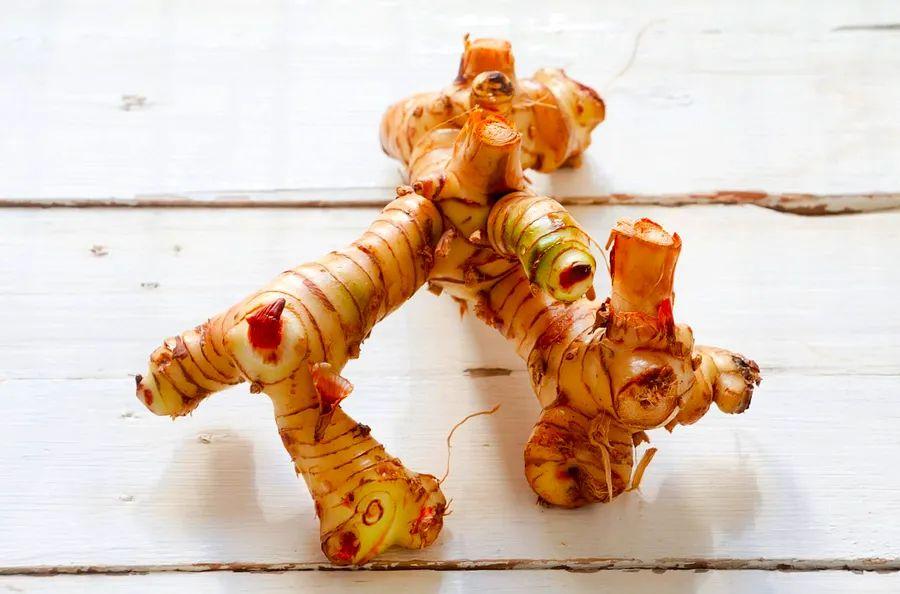What is Galangal?

Ever wondered why you can’t quite replicate the bold flavors of Thai cuisine at home, or unlock the secret behind the rich taste of Indonesian curries? Galangal might be the key. A member of the rhizome family—alongside ginger and turmeric—this root vegetable is packed with flavor and is an essential ingredient in soups, sauces, and other Southeast Asian dishes.
How Galangal Differs from Ginger
At first glance, galangal and ginger may seem alike, but a closer look reveals distinct differences. Galangal’s skin is smoother and lighter in color, ranging from pale to pink or yellow inside. It’s firmer and more fibrous than ginger, which gives it a unique texture. The key contrast, however, is in taste: Galangal has a citrusy, earthy, and somewhat astringent flavor, whereas ginger carries a spicy, slightly sweet profile. Despite their similar appearance, their textures and flavors make them far from interchangeable.

How to Incorporate Galangal into Your Cooking
Galangal is a staple in Thai, Malaysian, and Indonesian cuisines. When a recipe calls for ginger, substituting with galangal can bring you closer to the authentic flavors you’d find at your favorite Southeast Asian restaurants. Due to its firm, fibrous texture, galangal can be peeled and finely grated for stir-fries and drier dishes, or added whole to simmering curries and sauces. Just make sure to remove the slices before serving to avoid the tough, stringy bits.
Where to Purchase Galangal
Galangal is sometimes labeled as Siamese ginger or Thai ginger, so keep an eye out for these terms while shopping. It can often be found at well-stocked supermarkets, but Asian grocery stores are your best bet. Fresh galangal is the preferred choice, but it is also available dried in slices or as a powdered form.

1

2

3

4

5
Evaluation :
5/5